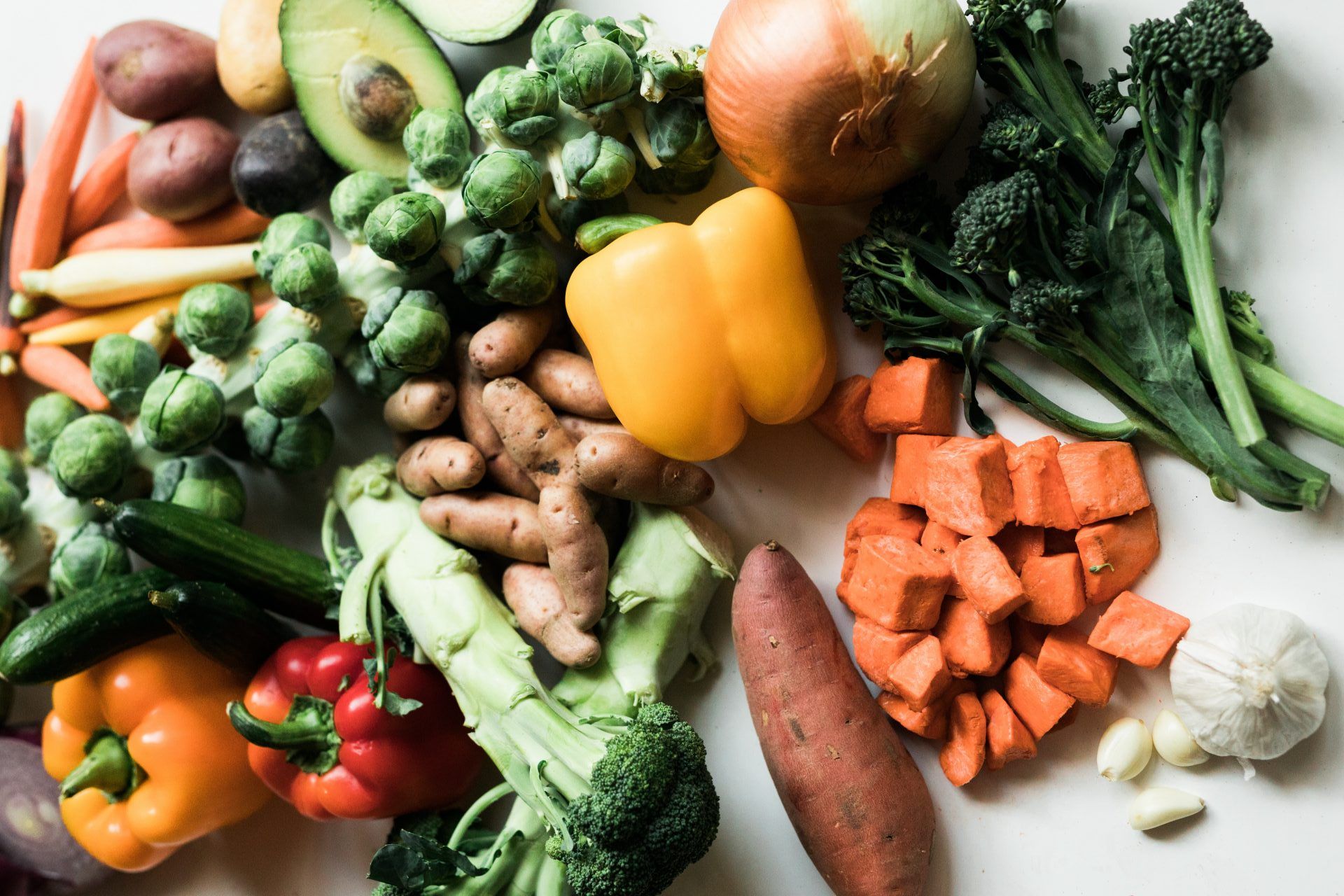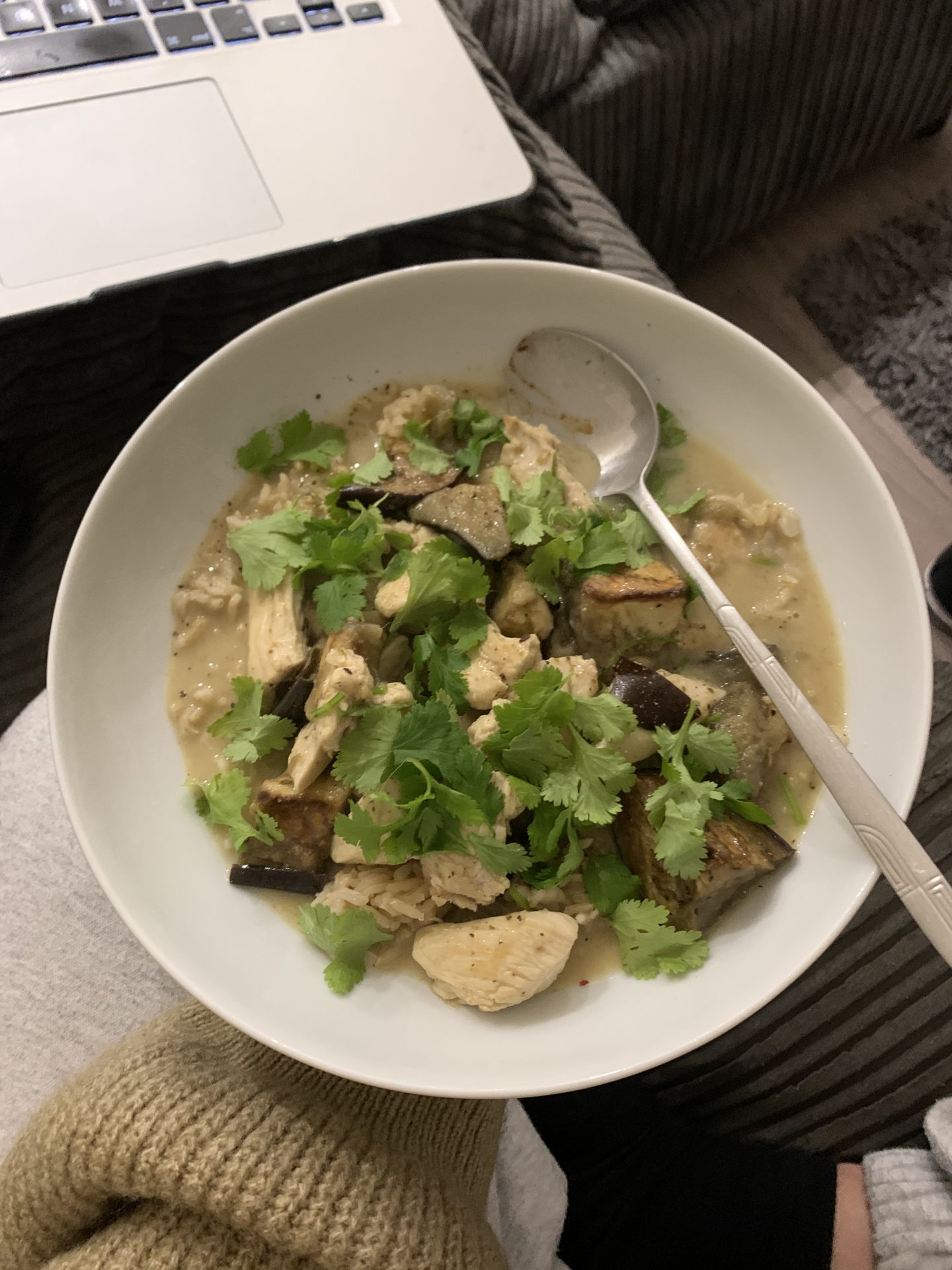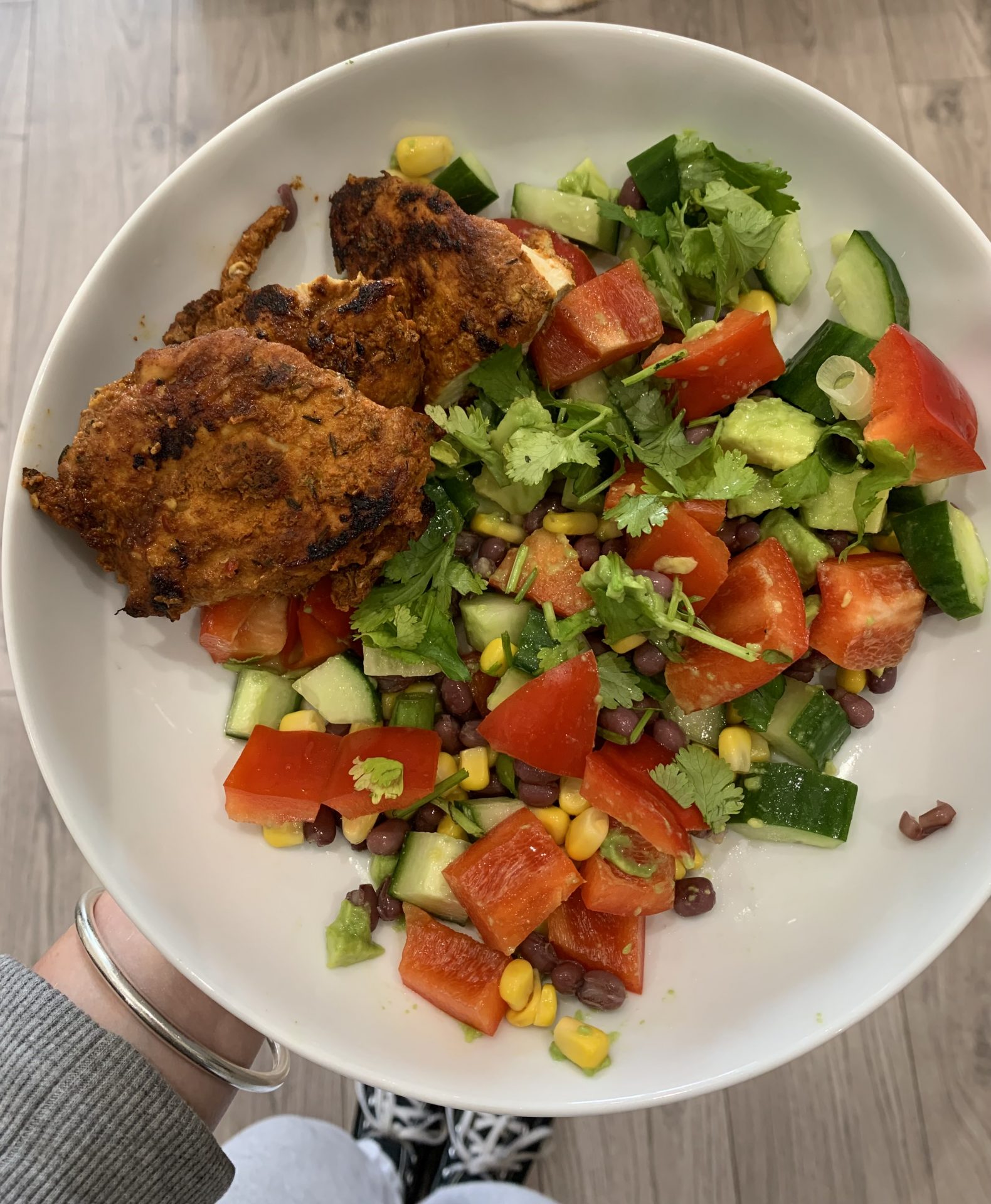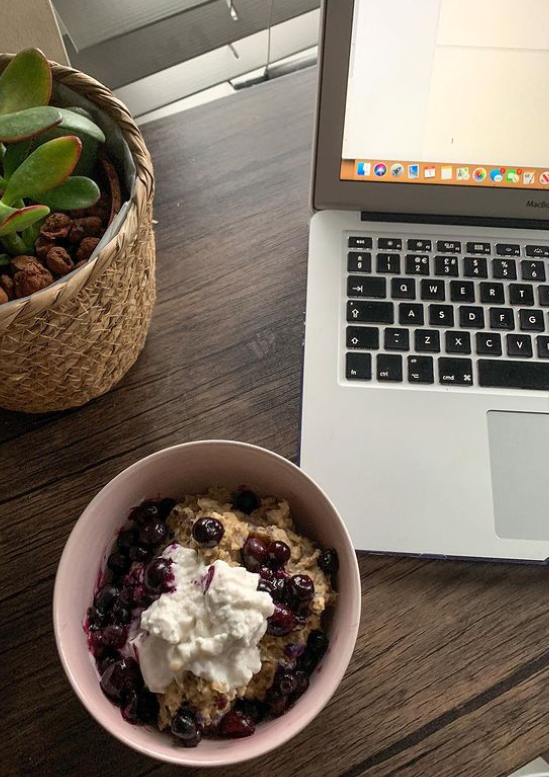
Nutrition experts are suggesting that we try to eat 30 different plants a week for gut health, immunity and mood. Here’s what happened when senior writer Chloe Gray gave it a go…
I’ve never struggled to eat my five-a-day. I’ve always loved eating fruit and vegetables and I easily munch down on at least seven different portions without too much effort – even up to 10 if I really think about it.
Over with the humblebrag, because my diet isn’t as good as it could be. While I may go above and beyond the daily recommended number, my intake across the week tends to stall. I tend to reach for the same fruits and vegetables from one day to the next. Sure, the recipes might be different, but more often than not it’s the same foods on rotation.
You may also like
5 a day: what counts?
Why does that matter? Well, when it comes to gut health, diversity is key. It’s something we should all be taking seriously: your gut isn’t just linked with how regularly you poo, but also how your metabolism, brain and body functions. As 70% of your immune system lives in your gut, it’s crucial to protect you from this winters’ super cold, too.
All of these reasons are probably why most nutritionists I follow on Instagram or interview for features are moving away from the idea of five-a-day and onto something bigger: eating 30 plants a week.
The benefits of 30 plants a week
The jump from five to 30 is pretty hefy, so how has the advice taken such a leap? Well, the five-a-day campaign was launched almost 20 years ago in 2003. But research in a 2014 paper from the University College London suggested that “seven a day cut the risk of dying from cancer and heart disease” and the more plants the better.
That advice is now more mainstream. You don’t need us to tell you that more people than ever are turning to veganism, and even local councils are launching campaigns encouraging us to eat more plants with meat-free Monday campaigns.
It’s Dr Tim Spector from the British Gut Project who has been instrumental in pushing for 30-a-week. In the project, researchers gathered microbiome samples from 10,000 people and ran a DNA analysis to identify strains of microbes found in the gut. They found that those eating 30 different types of plants a week had optimum gut health and reduced symptoms of dysbiosis, a dysfunction in gut microbiome.
How to eat 30-a-week
Knowing all of this, I set out on a challenge to eat my 30 a week. But after a couple of days of non-stop fruits and veggies, I got stuck. I couldn’t work out how to keep that number edging closer towards 30 without living on a diet of salad – and I know that I need more carbs and protein than a diet purely consisting of lettuce and tomato can give me.
I turned to Catherine Rabess, a dietician specialising in gut health, to ask her for help. “The reason you’re struggling is because 30 a week isn’t just focused on fruits and vegetables but rather all plant sources,” she explained. These include wholegrains, pulses, nuts, seeds, fresh herbs and spices, too – thank god.
You may also like
Nutrition tips: how using herbs can help boost your energy and immune system
“It’s all related to the non-starch polysaccharides, which are different types of dietary fibres found in plant foods that the gut bacteria feed off of. All the different microbes eat different types of dietary fibre which is why diversity is really important. By having the same apples, strawberries and bananas every single day you may be feeding, let’s say, a million types of microbes but actually you’re then missing out on feeding millions of others,” she explained.
With a much more manageable (and delicious) plan in place, I started my mission from scratch.

Day 1:
I start with a bircher muesli made with oats, dates, chia seeds and pumpkin seeds – setting myself up for an easy four. However, I knew that in my portion of bircher wasn’t a typical serving of each of these ingredients. According to the NHS, a serving of fresh fruit and veg is around 80g, while dried fruits, nuts and seeds are around 30g. But when it comes to your 30 a week, “diversity is more important than quantity,” Catherine says. As long as it is a substantial portion, it’s ok if the serving is less than perfect, she assures me – especially if you’re eating multiple servings across the week.
For lunch, I tuck into wholemeal pitta, cucumber and houmous. Seeing as I got through the whole tub of Sabre by the end of the week, I’m counting the chickpeas.
For dinner, I make a Thai curry with aubergine and baby corn. Including the huge sprinkling of coriander I throw on top, I’ve logged another three in. I end the day pretty impressed and very satisfied.
Weekly total: 10

Day 2:
I grab my pre-gym banana before running out of the door at 6:30AM. My re-fuel breakfast was a bowl of porridge made with chia seeds and topped with blueberries and peanut butter. As I’ve already had oats and seeds the day before, I log two more plants (because trust me, I eat way more than 30g of nut butter over the course of a week).
After scrolling past a MOB Kitchen recipe for a Mexican salad, I’m inspired to make it for my lunch. It includes chopped peppers, cucumber and avocado plus shredded corn on the cob, black beans, paprika chicken and a whole lot of lime juice. I happily add five new plants onto my total count.
My smugness ends there. I go to meet a friend for drinks and the only dinner I have time for is a load of bread and houmous as I’m running out of the door. No more points for the day.
Weekly total: 17

Day 3:
Today I hit a wall. My pre-gym snack and breakfast are the same as yesterday, so there are no new plants for the morning. The Mexican salad consisted of so many different veggies I appear to have made enough to feed an army for weeks on end, meaning I have to eat that up for lunch again too.
This is exactly how I so often end up eating the same rotation of veggies: being a single person who cooks for herself, I end up eating the same bulk-made meals for a few days at a time. I find having a constant source of diverse ingredients pretty impractical for my lifestyle.
You may also like
Meal prep for beginners: how to cook ahead for busy days
“It can be really tough to keep up diversity when you are cooking for one, but remember that foods don’t always need to be fresh. Tinned options and frozen foods are useful in terms of costs and cooking portion sizes that are appropriate for one,” Catherine says when I moan to her about this. She’s right: foods that are frozen within hours of being picked are actually proven to hold more nutrients than some fresh foods. I make a mental note to do a frozen food haul ASAP.
In the meantime, I’m back to square one. I go to an event in the evening and I’m starving by the time I leave, so I grab sushi en route home. I could count the nori but it seems slightly pathetic, so I call today a blip and move on.
Weekly total: 17
You may also like
Batch cooking makes dinnertime so much easier – here’s an easy 6-recipe guide
Day 4:
You guessed it: a pre-workout banana and post-workout porridge. Today, however, I topped my bowl with some frozen raspberries for something a little different.
It’s the last day of the seemingly never-ending salad, so I’ll skip forward to dinner. I eat brown rice pasta topped with olive oil and courgettes, cherry tomatoes and fresh basil – delicious and an extra three plants. No complaints.
Weekly total: 21
Day 5:
Today’s porridge is topped with frozen strawberries (yes, I did buy out the entire frozen fruit section). I’m aware that I could be swapping my oats out in favour of some grain diversity to make this easier but, what can I say? I love oats, they’re the perfect quick-cook meal for the few minutes I have spare between the gym and work, and they’re a really easy way of getting in carbs and protein after training.

Lunch is leftover pasta, but dinner helps my count. I pick up a salad bowl that includes red cabbage, carrot, broccoli and edamame beans – I think I’m getting the hang of sniffing out the most vegetable-dense options when I’m out of the house now.
Weekly total: 26
Day 6:
This challenge is starting to feel doable. I have two days left and just four plants to go, so I relax a little. I have a smoothie made with banana, protein powder and spinach and tuck into peanut butter on toast – one down, three to go.
I go out for my best friends’ birthday and, while I didn’t exactly prioritise plants, I did end up eating olives at the bar and sweet potatoes with dinner. Two veggies on a drunk night out? I’m impressed.
Weekly total: 29
You may also like
Best hangover food: can what you eat make you feel better after drinking?
Day 7:
Don’t hate me, but I am the sort of person who loves fresh, nutrient-dense food when hungover. My body cries for vitamins in a bid to counteract the wine (and gin and tequila), so after a brunch of scrambled eggs, whole grain toast and a berry smoothie, I make a veggie-loaded stir fry for dinner. Broccoli, sugar snap peas and sesame seeds make my list and I am happy to report I’ve gone above and beyond my 30 a week.
Weekly total: 32
How easy is eating 30 plants a week?
Honestly, it was easier than I thought it would be. I’d be lying if I said it didn’t require a bit more attention to my diet, and that I had to work a little harder following the days of beige dinners. While post-lockdown plans may have taken priority over my vegetable intake on more than one occasion, I think that just proves 30 a week would be even more achievable during the times I have a better routine.
As I’m used to quite a high-fibre intake, I wouldn’t say I noticed that the extra plants caused me any discomfort. The rule for increasing your fibre intake is to do it slowly to avoid overloading your gut – just something to consider if you’re not used to a whole load of fruits, vegetables and wholegrains.
“My other tips for getting in more plants would be to incorporate pre-packaged vegetables, such as stir fry mixes, mixed salad leaves or five grain pouches. Each mix offers a variety of vegetables, which will contain different variations of polysaccharides,” says Catherine.
She also suggests “adding toppings to the meals you already enjoy so you can increase your plant intake without having to make a huge change to your diet.” Sprinkling seeds onto yoghurt or salads or adding fresh basil and coriander to dishes is a great way to start.
You may also like
What are the benefits of eating chia seeds?
“Bulk out sauces with beans and legumes, like adding chickpeas and lentils in your favourite chicken curry,” suggests Catherine. This is because it’s so much easier to focus on adding things in, rather than taking things out. The benefits of a vegan diet aren’t necessarily to do with the fact that they eat less meat, but a lot to do with the fact that they often eat more plants than omnivores. While there is a lot to say about limiting your intake of red meats for health reasons and eating less animal protein for the environment, going for half-and-half is a good place to start for your gut health.
I’m definitely going to continue challenging myself to try new plants every week. Even if I don’t feel wildly different right now, the long term health impact of adding extra plants makes it worth it. A healthy habit that is way easier than it sounds? I have no excuse not to.
Sign up to the Strong Women Training Club for exclusive recipes and expert nutrition advice.
Images: Unsplash / Chloe Gray
Source: Read Full Article